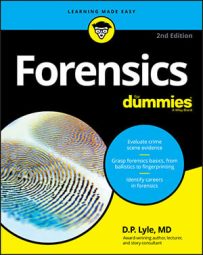In 1971, Georgi Markov defected from Communist Bulgaria to London. An outspoken critic of the regime in his homeland, he continued his assaults in antigovernment broadcasts on the BBC. The Bulgarian government was less than pleased with his diatribes.
While walking on the Waterloo Bridge on September 7, 1979, Markov felt a sharp pain in his right thigh. He turned to see a stranger with a furled umbrella. The man apologized in a thick accent and hurried to a cab. Inspecting his leg, Markov discovered a red puncture mark on his thigh.
That night Markov fell ill, and by the next morning, had a high fever, rapid pulse, and low blood pressure. His wound was severely inflamed, and his white blood cell count soared. X-rays of his leg revealed nothing, and despite large doses of antibiotics, his condition worsened during the next two days, and he died.
During an autopsy, a section of the skin around Markov's wound was removed and sent to Dr. David Gall, an expert in poisons at the top-secret government Chemical Defense Establishment at Porton Down.
Within the submitted tissues, Gall found a metal pellet the size of a pinhead with two tiny holes drilled into it. He assumed that the pellet, containing a lethal substance, had been injected into Markov by a gas gun hidden within the assailant's umbrella. The nature of Markov's demise made bacterial and viral entities unlikely culprits and favored a chemical toxin.
Only ricin, a substance derived from castor beans, seemed to fit the scenario, but the police had no reliable test for ricin. The body's natural enzyme systems quickly break down ricin, leaving no trace of it.
In an ingenious experiment, investigators injected an amount of ricin equal to what the pellet could hold into a live pig. The animal quickly became ill and died in less than 24 hours. An autopsy of the pig showed organ damage identical to that in Markov's organs, suggesting that ricin was indeed the agent injected into him.

